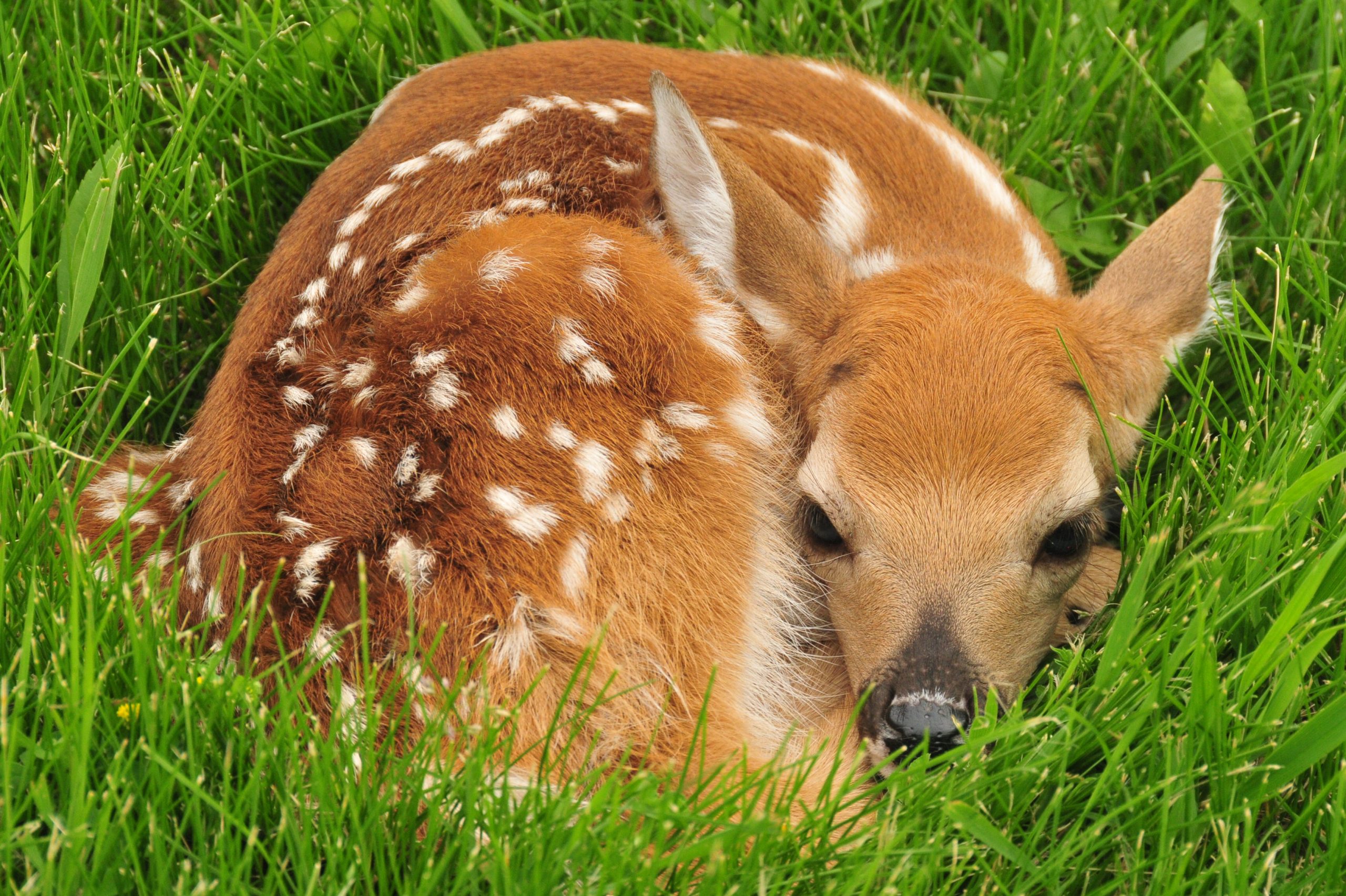
Public Encouraged to Avoid the Urge to ‘Rescue’ Young Wildlife

A white-tailed fawn may be left alone for hours at a time by its mother, but shouldn’t be seen by well-meaning wildlife watchers as vulnerable or in need of being rescued. /US Fish and Wildlife Service photo: Tom Koerner
DNREC Reminds Delawareans: ‘If You Find Them Alone, Leave Them Alone’
It’s coming up on the time of year when wildlife watchers in Delaware are most likely to happen upon young animals, particularly deer fawns, that appear to have been left alone, even abandoned in their natural environment – and “So tiny, so helpless…so cute!”, they look very much like they need rescuing by a kind public hand or two. Almost always, that’s not the case – rather, these young’uns are waiting for a parent’s return from foraging or from a nearby vantage of keeping a close eye on them. Thus an annual reminder from the Department of Natural Resources and Environmental Control: if you find them alone, leave them alone – because taking or “rescuing” a young animal from the wild almost inevitably means that it will not survive.
While young animals can appear to be abandoned, and occasionally are due to unfortunate circumstances, most often they are not, with their mothers usually in close proximity waiting for the nature-loving person who “discovered” their offspring to move on. Many wildlife species, including white-tailed deer, will leave their young to forage for food, returning a few times a day, while trusting their young’s natural instinct to lie quietly so as not to be detected by predators.
DNREC Division of Fish and Wildlife puts particular emphasis on not intervening with newborn fawns, as Sam Millman, Delaware deer biologist in the DNREC Division of Fish and Wildlife points out: “Removing fawns from the wild can be stressful for the mother and be detrimental to the future of the young deer, since they cannot learn directly from their parent on how to survive in their natural environment.”
Another important insight from DNREC is that handling or removing wildlife can be harmful to both wildlife and humans. Precautions to take with wild animals, young and old, include:
- If you see a young wild animal alone, watch from a distance to see if its mother returns, but realize that could take several hours.
- Be aware that wild animals can be unpredictable and occasionally dangerous, especially if they are in pain.
- Keep pets away from wild animals, which can carry parasites such as fleas and ticks, or diseases such as rabies.
- Remember that it is illegal to raise or keep a live wild animal in Delaware.
During spring and summer months, rabies, which is occasionally found in wildlife, is more likely to be transmitted to humans and pets due to our increase in outdoor activities during this time of year. All the more reason to leave wildlife undisturbed and keep a safe distance between you and them.
For more help in trying to determine if a young wild animal is orphaned or injured, or is simply exhibiting normal behavior for a species in the wild instead of needing to be rescued, contact the Delaware Council of Wildlife Rehabilitators and Educators. To determine the appropriate course of action if a young wild animal appears injured, or if you are certain its parent is deceased, call the DNREC Wildlife Section at 302-739-9912, or toll-free after-hours and on weekends, at 800-523-3336.
About DNREC
The Delaware Department of Natural Resources and Environmental Control protects and manages the state’s natural resources, protects public health, provides outdoor recreational opportunities and educates Delawareans about the environment. The DNREC Division of Fish and Wildlife conserves and manages Delaware’s fish and wildlife and their habitats, and provides fishing, hunting, wildlife viewing and boating access on nearly 68,000 acres of public land owned or managed by the Division of Fish and Wildlife. The DNREC Division of Parks and Recreation oversees more than 26,000 acres in 17 state parks and the Brandywine Zoo. For more information, visit the website and connect with @DelawareDNREC on Facebook, Instagram, X (formerly known as Twitter) or LinkedIn.
Media Contacts: Michael Globetti, michael.globetti@delaware.gov; Joanna Wilson, joanna.wilson@delaware.gov
EIN Presswire does not exercise editorial control over third-party content provided, uploaded, published, or distributed by users of EIN Presswire. We are a distributor, not a publisher, of 3rd party content. Such content may contain the views, opinions, statements, offers, and other material of the respective users, suppliers, participants, or authors.

